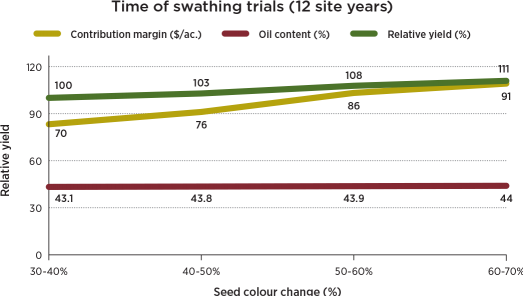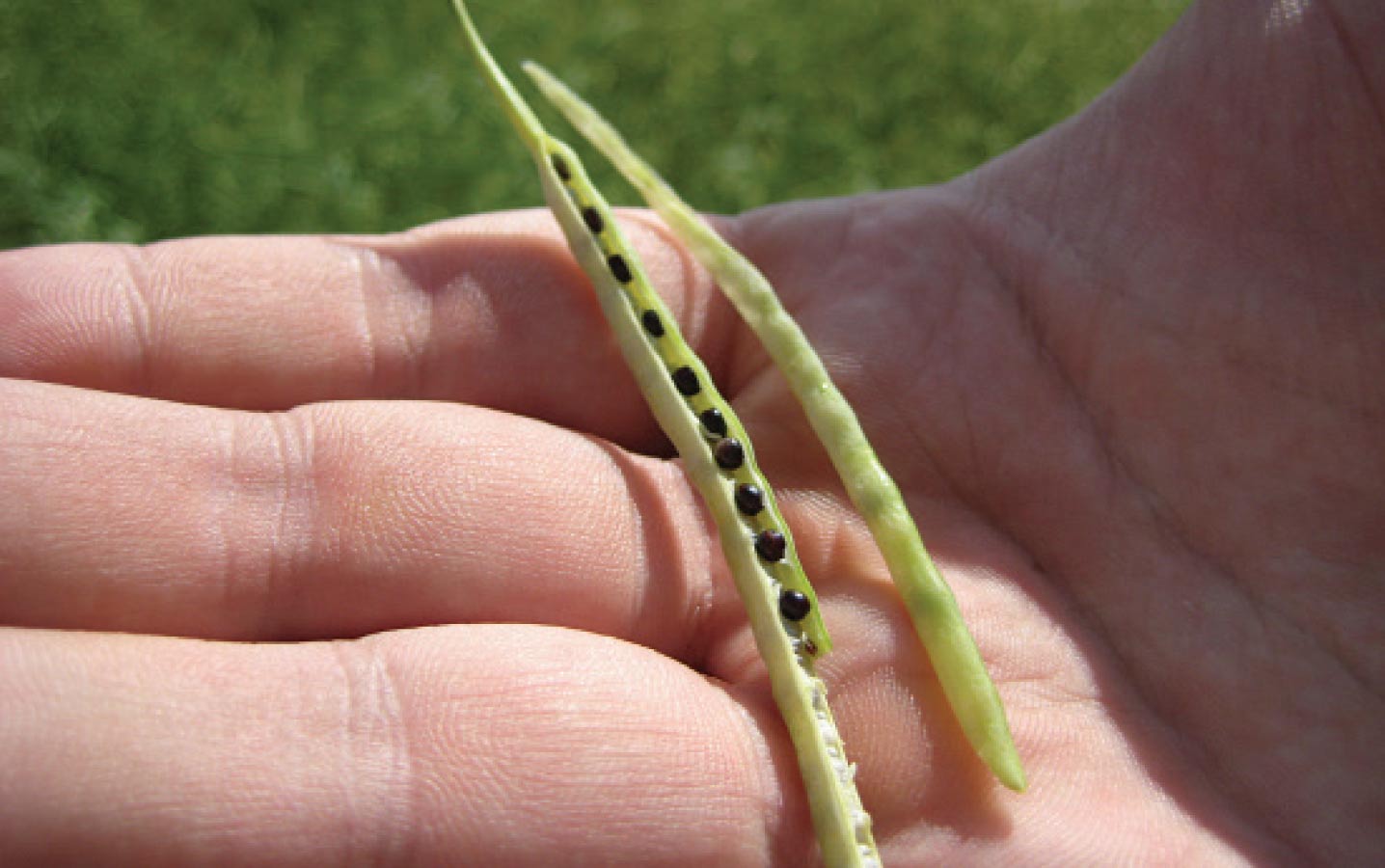Wait for 60 percent seed colour change
Growing spring canola in the moderately short growing season of
the Canadian Prairies always tests the tipping point between maximum maturity time (to produce maximum yield) and avoiding the first frost. With growers taking on more acres than ever, the time crunch at harvest can make it tempting to begin swathing early. But the yield gain and improved quality that rewards additional time for colour change can make it well worth the wait.
The study that first shared these findings was published in the Canola Council of Canada’s (CCC) Crop Production Centre summary reports in 2001 and 2002 and has since been supported in subsequent literature.
This 12-site year CCC study, carried out in locations across Manitoba, Saskatchewan, Alberta and one site in British Columbia, determined that the highest yielding swathed crops were cut at either 50 to 60 percent seed colour change (SCC) or 60 to 70 percent SCC on the main stem. Swathing progressively later (to a maximum of 60 to 70 percent SCC) also corresponded to increasingly better economics. By delaying swathing until 60 to 70 percent SCC, canola fields produced higher seed weights, greater oil content, lower green seed percentage and a higher grade.
A similar swath timing study by Brown et al (1999) determined that yield loss and swath timing were strongly related. The lowest losses were associated with swath timing as late as 60 to 80 percent “brown seed” and the highest losses were recorded for crops swathed at 10 to 20 “brown seed”.
For growers producing seed canola, Elias and Copeland (2001) also found that harvesting canola when seeds were brown to black instead of greenish-brown to light brown resulted in higher seed quality, including increased germination and seed vigour. More recently, Daun (2006) confirmed that yield and oil content were positively correlated in an extensive study of canola samples from across Western Canada. The increased duration required for higher yielding crops to mature also provides the additional time needed for chlorophyll levels to decrease to an optimal level.
This is supported by Watson et al (2008) who determined that percent green seed was significantly higher in early harvest and seedpod shatter losses were greater in the later harvested treatment.
Interestingly, the varieties used today may have even more dramatic results, since high-yielding hybrid varieties, which produce secondary branching, make harvesting canola at the optimal time even more crucial.

Just as the shift in acres from lower yielding (determinate flowering) Brassica rapa to higher yielding (indeterminate flowering) B. napus was associated with a greater time
to maturity, so is the shift from older to more current varieties with high yield potential.
Since the seed yield increases as the crop matures and seed moisture decreases, it is imperative to postpone harvest until the maximum yield is reached. Vera et al (2007) reported the sigmoid curve that seed yield follows as seed moisture content decreases over time, with some sites only reaching their maximum yield near 20 percent moisture. Premature swathing (in this study) led to significantly lower seed yield, seed weight reductions and compromised seed quality. Meanwhile, swathing at physiological maturity resulted in higher yields.
To get a better idea of how long to wait to swath, note that SCC can increase at a rate of approximately three to five percentage points every day. Therefore, a field at 20 percent SCC will be at ideal swath timing in approximately eight to 13 days.
On the Prairies, canola that is physiologically mature will typically see one to three percentage points of moisture loss per day. This means that a crop swathed at 25 percent moisture could drop down to 10 percent moisture in five to 15 days. Hot, dry conditions will accelerate both increase in SCC and dry down rate.
Of course, every year won’t necessarily allow for ideal conditions and 60 percent SCC. If growers can’t wait for this threshold for all crops, waiting even a few extra days to swath on a few fields will reduce average quality losses and increase yields for the farm. For more information check out the CCC swathing guide.





